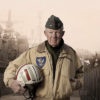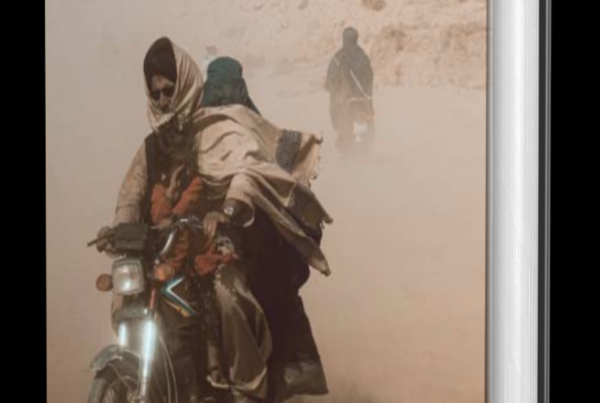BIG SKY, Montana – At the first hints of dawn light, dozens of camouflaged bodies trek up the steep mountainside, ducking beneath the dense forests of aspens and lodgepole pines. Each carries a wooden bow bound by bowstrings, and arrows reminiscent of something belonging to medieval times.
It is the annual three-day Total Archery Challenge (TAC), nestled inside Montana’s iconic topography of treeless crest lines and deep valleys, and draws veterans and civilians alike for a recreational shootout centered on skill and enjoyment rather than keeping score. Each course includes more than one hundred 3D targets designed to challenge every participant’s marksmanship, regardless of experience level.
But there is more to it than just pulling back on a projectile.
“I compete in target archery so that I can be a more ethical hunter. What happened was, I grew up just wanting to hunt and make a kill shot, and that is the food we would eat,” John Dudley, arguably one of the world’s top archers and coaches, and founder of Nock On Custom Archery, tells me. “Then, suddenly, I went to a tournament and realized I wasn’t even very good. I related that to the fact it was all part of hunting, and you keep going until you get lucky. I was just getting lucky.”
And luck, as John realized in a moment of epiphany, would someday run out.
“If I really wanted to be an ethical hunter, I needed to be the most accurate archer that I can personally be,” he continues. “So, I tell people that I shoot archery to be better at bow hunting. And that is what this event right here boils down to.”

While environmental and animal advocates may beg to differ, hunting still serves a pivotal place in rural America – a natural means to thin the herds of prey animals that reproduce beyond the environment’s conveyance capacity. Even though the humble bow and arrow might not have the ability of a large hunting rifle, it still plays a part.
Even conservation efforts have, in addition, found their way into the ever-growing realm of nonfungible tokens, or NFTs. And as the underlying blockchain technology gains momentum, a range of wildlife preservation and hunting organizations plan to further utilize the sale of NFTs to raise funds and awareness of key issues.
With decades of experience under his belt – or bow – John has gone to personally instruct an array of prominent figures from comedian and commentator Joe Rogan to UFC Hall of Famer Royce Gracie as well as decorated Navy SEAL and leadership figurehead Jocko Willink.
At one point, John recalls, Jocko thanked him for the guidance in shooting a bow and expressed a desire to go elk hunting. He asked what the best training he could do and related it back to preparing for a military operation.
“I told him about the Total Archery Challenge, which is three-dimensional targets in very realistic hunting situations. An important part of this goes back to important war simulations, which can be almost harder than a (real) situation. (Jocko) wanted to make sure he was almost over-prepared in what he was going to do,” John notes, underscoring that he unveils the same such wisdom to new archers. “If you can do this, you can get better and better; you can have the confidence to hunt and put the elk on the family’s table for the year.”
After all, nobody wants to see a wounded animal suffering a slow death. Practice isn’t just perfect; it’s the only virtuous recourse for the wilderness. Unlike hunting with a gun outfitted with precision lasers, the old-fashioned bow demands much more dedication and finesse.
What I observe most about the shooters is their hyper-vigilance to their surroundings, an almost freakish, Zen-like focus on the task at hand. For many participants, their lives were long centered on shooting M-16s or MP5 submachine guns on faraway frontiers in the face of a brutal enemy. Yet, in many ways, the simplicity of a bow and arrow not only induces the same sense of determination but brings back to life the more positive side of that experience – the individuality of success inside a team, of wayfaring through the woods with a sense of camaraderie.
While clearly a male-dominated avocation, I wandered through the small labyrinth of trade show-like tents with various companies selling the latest and greatest archery goods and products, admiring the tanned and exhausted faces of women creeping down from the hilltops resembling carbon copies of Lara Croft or Katniss Everdeen.
One former U.S. Marine-turned-devout-outdoorsman stops me as I pass by, remembering my face from a videotaped podcast, and we chat for some time about his newfangled love for the bow-and-arrow. He is at TAC with a fellow Marine who lost his legs in Afghanistan’s Helmand Province more than 12 years ago. For scores of veterans, the event is a chance to reunite in one of the visually magical swaths of Americana.
The word itself stems from the Latin “arcus,” meaning bow. However, the oldest known evidence of the classic bow and arrow hails from caves and crevices peppered across South America, whereby remnants of bone and stone arrowheads have been recovered embedded in the earth, dating upwards of 72,000 years ago. Other relics made of pine and akin to Paleolithic times – around 10,000 BC – have been recovered in swamps and cavities across Europe. Indeed, the time-honored instrument is one bathed in much mystique. It has been a centerpiece of many ancient civilizations, from the Assyrians, Greeks and Armenians to the Persians, Parthians, Romans and Indians.
The emergence of firearms essentially rendered the bows archaic early into the 1500s. Nonetheless, the range weapon was brought back to life in the 18th century as a sport, birthing a bevy of high-brow societies lined with archery competitors decked out in outlandish costumes and increasingly stringent rules and regulations. Its popularity dipped in the twilight of the 19th century, with all classes turning to tennis and croquet, and reinstituted again in the U.S. around the onset of the First World War.
In a true homage to the history books, the time-honored tradition again declined into the 21st century only to gain another lease on life throughout the onset of the 2020 COVID-19 pandemic, whereby widespread lockdowns and indoor activity closures propelled people back into the open air and socially-distant hollows of Mother Nature and self-sustainability.
Nevertheless, for many veterans especially, the pastime has a remedial quality, tapping into the solitude of being in scenic spaces and the explicit mission of aiming and shooting sans the piercing bang or devastating explosion reminiscent of the war theater.
It is not that the explicit topic of therapy is discussed in between the expansive horizontal sweeps of chrome rangeland, only there is little doubt an abundance of therapy happens as veterans barb their way back into civilian life, finding new footing, identity, and purpose out-of-uniform.
“An overwhelming number of veterans say how important this is for them – the therapeutic side. In the beginning, when I went to shoot, I lost all my arrows. You feel a sense of defeat like, wait, I have seen people do this. I know it is possible, so why can’t I? So, you want to be good at archery,” John explains.
“There is this primal thing, something in the DNA that no matter whether you’re a hunter or not a hunter, whether you’re a girl or a guy from the city or country, whenever someone gets a bow for the first time, and they pull it back and let go, and it goes and hits this thing that they’re looking at, there’s just this feeling of like, holy crap, that’s freaking awesome. So that’s what you want.”
From the military side, John observes, a lot of people come into the sport already skilled to strike.
“They’re good with guns. They’re accurate shooters. So, then they get this bow, and at first, they’re probably accurate. Their focus is accurate, but then you start to realize that when your mind isn’t all there, you suck at it. And so, you can’t fight that state of ‘I need a clearer mind to do this.’ If I’m focused on something else, I’m not good at archery,” he continues. “So then when you start to shoot your bow, you’re like, why am I missing? Why am I missing? What am I missing? I’m missing it because I’m not here. Like mentally. I need to let all this stuff go that I’m thinking about, and I need to be present with my reflexes and my coordination and my mental attention to this thing.”
John pauses for a long moment of reflection.
“And then all sudden, you do that, and then you’re hitting the target, and you realize I started hitting the target when I forgot about all the bullcrap I was thinking about that was clouding my mind,” he asserts. “And I think that’s why it’s so therapeutic when the military people start to quiet their minds because competitively, they want to be accurate.”
Late one warm afternoon, when the bows have been carefully stowed, and the shooters are milling about over BBQ and beer, I sit with John on wooden tree stumps to learn more about this ancient activity and how one becomes a professional bow hunter.
He tells me he was born a Fort Bragg military baby, moved to the Mississippi Delta at the age of one, and then into the Midwest at seven. A self-described “athletic kid,” John got heavily into sports and archery at around ten years old, taking part in family traditions of turkey, duck and deer hunting as the “kind of yearly calendar for food” when visiting relatives in the South.
“I just freaking loved the feeling I got having to be patient, then getting a shot. I loved how nervous I got, the adrenaline. You feel life for the first time,” he remembers enthusiastically. “You think you are too nervous to do it, and then you overcome it and succeed. It is a gratification on such a higher level.”
Through his teens, John rose in the ranks of high school football which came with a college scholarship. However, a nondescript drive down a dirt road advertising an archery tournament with 3D targets at the age of 18 altered the course of his life. It was the first time he had seen anything beyond a paper target.
“I sucked so bad that I had lost every arrow I brought. And then when I left, I was so upset because it was the first time as an athlete that I wasn’t good at something. This thing beat me, so it just drove me crazy. So, I drove to a store and bought more arrows and drove back to the shoot,” John recounts. “So fast forward to the next day, and I’m in that gun and archery shop just watching what people are buying and seeing the guys in the range and seeing equipment I’ve never seen before. I went into that world and just dove in headfirst, honestly, and ended up getting a job at that archery shop.”
Something instinctual prompted him to forego the esteemed college football scholarship to earn $4.10 per hour in the store, following heart over head.
“I went from not being able to finish a course and losing every arrow in 1994 to being Rookie of the Year and turning pro in 1997 and winning a couple of national championships with the teams,” John says. “I started winning checks, and that led to getting sponsors that would pay for me to go and pay my entry fee. For 28 weekends in a year, I was competing.”
Nowadays, as advocated through “Nock On,” archery is more than just John’s means of having fun – or feeding the family. It is an entire lifestyle, replete with podcast and video training modules, healthy living and fitness guides to maximize your archery experience, and even a cooking culture tailored to making the most out of wild game catches.
There is something riveting, something special in observing how one can take something niche that they love so deeply and create an entire – albeit incredibly successful – brand and company from that singular thing.
“I have dedicated my life and time to the sport of archery, and a big part of that is offering a free educational platform. I am doing what I love to do, whether paid for it or not. I’m so happy doing it, and when I meet people coming into it, there is something so energetic about it,” John quips. “I feed off that. It is contagious. When I see someone who has that same internal fire to learn.”
Nonetheless, the proudest moment in John’s storied career stems not from one of his own hits but that of his son Harry, now 23.
“He was around ten at the time, and he was starting to sleep over at other people’s houses. I had taught Harry about guns, so I wasn’t worried about him. I was more worried about his friends who had parents that don’t allow guns. If they have never seen a gun, they are going to want to see it, hold it, and pull the trigger because that is what they see in movies,” John points out.
This led John – with permission from the parents of his son’s friends – to hold a small informal class on firearms safety. On the last day of class, the kids all had to identify particular animals, and John asked them what the first thing they would want to hunt was. The kids were naturally one-upping one another, and when Harry was asked last, all there was left to answer was a dinosaur.
“And so, I looked at him, and I said, well, technically an alligator is a dinosaur, do you want to shoot an alligator because I know I’ve actually got friends in Florida, and a certain part of their operations is the management of alligators. We ended up taking him down to this place. The male came out, and we set up in a position, and he made just an absolutely perfect shot,” John adds with a smile. “So, for me, I always like the fact that my kid wanted to shoot a dinosaur for his first ever bow hunt. And he was able to keep his composure. I remember that one way more than any of my own.”











